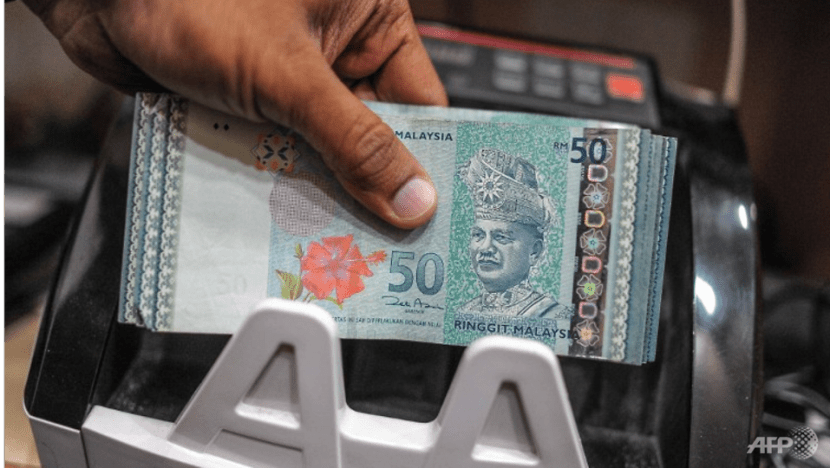Singapore dollar hits all-time high against Malaysian ringgit

File photo of Malaysian ringgit. (Photo: AFP/Mohd Rasfan)
SINGAPORE: The Singapore dollar continued its rise against the Malaysian currency on Monday (May 23), reaching an all-time high against the ringgit.
The Singapore dollar reached a record high of RM3.1964 on Monday, largely due to strength in the Singdollar, before easing to RM3.1950 later in the day.
"SGDMYR hit a record high of 3.1964 this morning (6.48am BST, 1.48pm Singapore time), largely due to strength in the Singapore dollar, as preferred by MAS officials." Mr Simon Harvey, head of FX analysis at MonFX, told CNA.
"There wasn’t one individual headline catching event, but instead the technicalities of Singapore’s monetary policy that created this all-time high," added Mr Harvey.
Sentiment around China also helped. News that US President Joe Biden was weighing cutting tariffs on Chinese goods helped lift the yuan to its highest since May 5.
"With the yuan holding the largest share in Singapore’s S$NEER basket, the rally in CNY dragged SGD higher too as currency traders looked to offset the depreciation in the Sing dollar relative to CNY with other currencies," Mr Harvey said.
"This saw SGD strengthen against other major trade partners, including USD (+0.49 per cent), MYR ( +0.13 per cent), HKD (+0.47 per cent) and JPY (+0.05 per cent), such that the S$NEER exchange rate continued to drive higher in line with (MAS's) preference.”
The Singapore dollar has been rising against the Malaysian ringgit since late April.
Money changers saw a surge of people lining up to buy ringgit in the week of Apr 25, after the exchange rate rose to 3.17, up from 3.10 levels in early April.
Experts CNA spoke to pointed to differing monetary policies by the Singapore and Malaysia central banks in explaining why the Singapore dollar has been rising against the Malaysian ringgit.
Singapore has pursued a more aggressive monetary policy by appreciating the Singdollar at a faster pace and at a higher level.
The authorities first tightened its policy in October last year when it raised the slope of its exchange-rate based policy band to allow the Singapore dollar to appreciate at a slightly faster pace. It then followed up with another steepening of the slope in January, surprising markets with an inter-meeting adjustment.
In its half-yearly policy statement in April, the Singapore central bank said it would raise the slope of appreciation “slightly” yet again, while re-centering the mid-point of the policy band “at the prevailing level”.
"The Singapore dollar has been stronger on the appreciation front because of the policy moves," said Saktiandi Supaat, head of FX Research at Maybank in Singapore.
Currency strategist Sim Moh Siong at the Bank of Singapore noted that Malaysia's central bank has been keeping its interest rate stable, although it did surprise recently by raising its benchmark lending rate by 25 basis points.
"This policy divergence is benefiting the Singapore dollar," said Mr Sim.
He said that the Singapore dollar is expected to stay strong in the near term, although there will be room for the ringgit to "play catch up" in the next six to 12 months, he added.
"By then, the rate hike by the Malaysia central bank will move into higher gear," said Mr Sim, adding that the ringgit should also benefit from higher commodity prices once the global risk stabilises.
Senior currency analyst at MUFG Bank Jeff Ng said MAS' appreciation policy for the exchange rate is "partly the reason" for the strength of the Singdollar.
The strength of the US dollar, together with some Chinese Renminbi volatility that arose from fears of higher US interest rates and concerns of US and China slowdowns also pulled down the ringgit "to some extent", he added.















